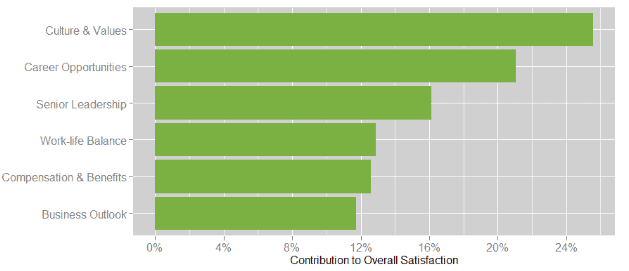
The Great Recruitment Challenge
by Jamie Bell, Service Desk Specialist at SDI
A common frustration I often hear about is companies struggling to attract talented individuals to join their organisation. The calibre of candidates applying is not good enough or they simply do not get any applications at all. I’ve previously written about retaining great employees but with this blog I want to delve a little deeper into how an organisation may go about attracting great candidates.
A survey of over 1100 people conducted by Glassdoor in the summer of 2018 revealed that job seekers prefer to use online job sites as their main source of vacancies, with most candidates likely to look at job adverts which have high salaries and attractive benefits. Further to this, the survey highlights that candidates consider benefits, commute time, and salaries as the main drivers behind actually submitting their application.
Do salary packages and attractive benefits mean great employees?
Results from the 2018 SDI Salary Survey suggest that there has been a shift in attitude towards salaries within the Service Desk. In 2015, only 17% of respondents revealed that they were ‘very satisfied’ with their salary. In 2018, this number jumped to 45%. Similarly, a smaller proportion of respondents revealed that they were dissatisfied with their salary than in 2015, coupled with a much smaller number being very dissatisfied. It’s very interesting to note that the salary survey also reveals that the average salaries for service desk staff hasn’t changed much over the same period. In fact, for Service Desk Managers and Service Desk Team Leaders, there has actually been a slight decrease. So why is there such a dramatic change to salary satisfaction levels?
A separate Glassdoor report compiled in June 2018 discusses the link between salaries and employee satisfaction. The chart below shows how much each factor contributes towards satisfaction levels.
Given what the 2018 SDI salary survey reveals about salary satisfaction levels it’s no surprise that compensation and benefits come in at second to last:

Leading the way on what contributes towards employee satisfaction levels is culture and values. Last month I wrote about keeping employees engaged, motivated and happy. Achieving this mostly relies on an organisation being transparent about career and salary opportunities, having a reward and recognition scheme, and having strong leadership.
I believe that this data adds weight to the notion that job seekers are driven to apply to work for an organisation based mainly on the salary and benefits package, however, this is not why employees stay at an organisation.
How can an organisation attract talented individuals in the first place?
An easy, but typically expensive option may be to use external recruitment agencies. Finding a recruitment agency that can add value to the hiring process can be difficult. Agencies add most value when they take the time to get to know your organisation and have something different to offer than just a resourcing service. Working with a traditional agency may work for some organisations but often this can result in quantity over quality when it comes to finding candidates that are a good fit for the business.
Having been the recruiter, the employer and the candidate at one time or another I have found the hiring process runs a lot smoother when an organisation retains control of every element. The only exception to this has been where the recruitment firm brings something different to the table, such as offering additional training for the candidate after placement to help ensure their success in their new role.
One consideration when putting together a job advert is your existing employees in similar roles. In the interests of transparency and consistency (two characteristics of ‘culture and values’), the salary and benefits package being made available for a new member of staff typically should not exceed that of existing staff. Imagine you are already working within an organisation and stumble across the same role you’re doing for more money and better perks. This will breed toxicity. In this day and age I believe it’s naïve to think that employees will find the subject of remuneration taboo.
Another consideration should be to understand the market. The 2018 SDI salary survey provides a great guide for the national average salaries for service desk staff. Bear in mind that as a rule of thumb, the more technical expertise required to be successful in a role, the higher the salary will be.
I have presented the notion that job seekers are mainly attracted by the salary and benefits package with staff longevity being achieved through great culture and strong values. This is understandable given that it’s difficult for a candidate to know what the culture and values of an organisation are like before joining. This is why websites such as Glassdoor have become increasingly popular (think Tripadvisor, but for employees rather than customers). I predict that over the next 2-3 years we will see a big increase in the organisations adapting their recruitment practises with the hope of demonstrating their commitment to culture, values and leadership at an early stage.
How can my organisation stand out?
From the candidates’ point of view, a great way to know if an organisation is worth the leap of faith is to look for existing evidence. For example; an organisation with an SDI Service Desk Certification maturity rating would have to have gone to great lengths to demonstrate their commitment to culture and values, strong leadership, and staff development.
Putting together a recruitment campaign that breaks the mould from traditional one-page adverts could help a organisation stand out. For example, I have seen some organisations draw attention to reviews from existing employees on Glassdoor and others who have put together video packages which provide a visual insight in to the working environment and culture.


























